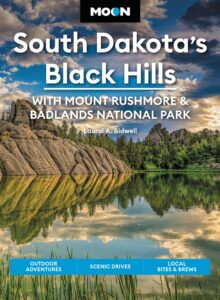Lake Scott State Park and Scott City
Midway across Kansas, south of the Monument Rocks and west of US-83, Lake Scott State Park (620/872-2061, daily Apr.-Sept., $5 per car) is a true spring-fed oasis sheltering cottonwood, ash, hackberry, and willow trees in open high-sky rangeland. Beyond offering a lovely and relaxing spot in which to unwind, Lake Scott includes Kansas’s most intriguing historical site, El Cuartelejo (The Old Barracks), which was once the home of the only indigenous Puebloan community in Kansas and the farthest north of any in the country.
Originally settled in the 1660s by Taos Pueblo people fleeing the Spanish in New Mexico, the area became home to the Picuris people about 30 years later. Both displaced groups joined with the local Plains Apache clan, but the oasis and the ruined pueblo buildings continued to be used for occasional nomadic squatting by the Pawnee people, and later by Spanish and French explorers and traders, before eventually eroding away. In the late 1880s the site was encountered accidentally by Herbert Steele, who stumbled onto the extensive irrigation ducts leading from spring areas to crop patches. Further excavation eventually revealed the pueblo sites, now considered the first permanent-walled structures in the state. The park has a few other historical points of interest, including a marker by the park’s entrance on Hwy-95 at the site of the fateful last battle between the U.S. Cavalry and escaping Cheyenne people led by Chief Dull Knife. The park also has herds of elk and bison, and visitors can see the preserved home of Herbert Steele, full of pioneer furniture and farming implements.
South of Lake Scott State Park, US-83 continues across the high plains, with not a whole lot to disrupt the continuity until Garden City, another 50 mi (81 km) south. The only town of any size is Scott City (pop. 3,803), with its miles and miles of cattle fencing, feedlots, innumerable cattle companies, and patriotic signs dedicated to the All-American City greeting you (or waving good-bye) at the town limits. It’s a hardy, industrious place, with everyone busy working.
Travel Map of the Road to Nowhere through Kansas
















